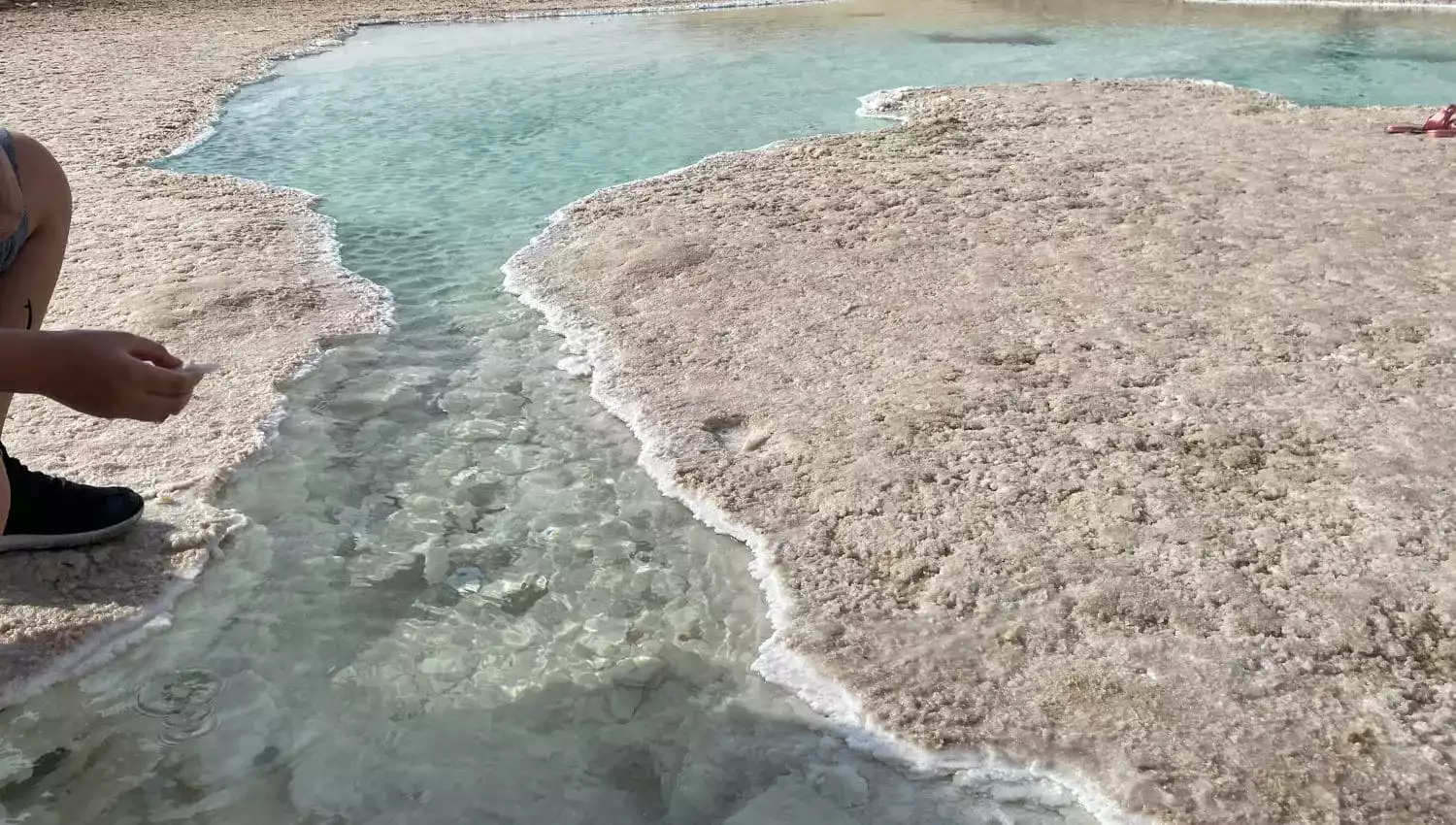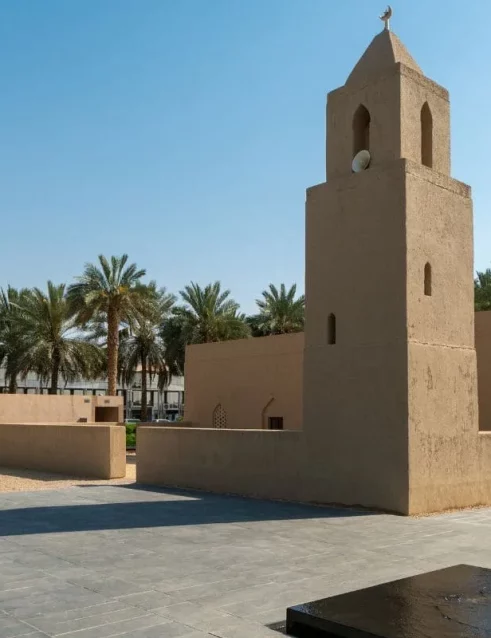Al Wathba Fossil Dunes

Visitors to the Al Wathba Fossil Dunes can witness the power of natural forces that once dominated the landscape of Abu Dhabi. These dunes, now preserved as part of a protected area, convey the tale of the emirate’s rich natural heritage. They form a mesmerizing attraction, drawing in tourists and scientists alike, eager to explore and understand the conditions that led to their formation. The fossil dunes not only enhance the environmental diversity of the UAE but also serve as an open-air museum, chronicling a time when this part of the Earth underwent dramatic climatic and ecological transformations.
The significance of Al Wathba Fossil Dunes goes beyond their aesthetic allure, as they hold vital information about the Earth’s climatic past. Researchers consider this area a key site for studying ancient wind patterns and desert ecosystems. It has become an educational resource providing insights into the age-old narrative of desertification and environmental shifts in the region. The dunes’ open access to the public since 2022 has enriched the cultural and natural offerings of Abu Dhabi, highlighting the emirate’s commitment to preserving its unique geological wonders.
Geological Significance
The Al Wathba Fossil Dunes are a testament to Earth’s dynamic climatic past, featuring lithified remnants that offer a window into the processes and conditions of an ancient environment. Geologists have meticulously pieced together the story of these formations, revealing a complex history imprinted in stone.
Formation Process
The creation of the fossil dunes began during the last ice age, a time when climate patterns differed markedly from today. Decreased sediment supply and changes in wind strength contributed to the development of these structures. High groundwater levels combined with frequent rainfall led to calcium carbonate acting as a natural cement, gradually fusing the sand grains into rock formations known as lithified sand dunes.
Composition
The fundamental component of the Al Wathba Fossil Dunes is calcium carbonate, which binds the dune’s individual sand grains. This intricate process of sedimentation and mineralization has resulted in the fossilized forms that are observed today. These formations display unique patterns and characteristics, such as the striations found in cross-bedded dune sands.
Natural History
Geologically, the Al Wathba Fossil Dunes represent a distinct phase in Earth’s natural history, specifically encapsulating a period known as the glacial period within the ice age. Over countless millennia, environmental factors shaped and solidified these sediments into the magnificent structures present today. The fossil dunes thereby hold profound significance for understanding past ecosystems and climatic conditions.
Visitor Information
Visitors looking to explore the Al Wathba Fossil Dunes can expect a well-organized experience, directed by the Environment Agency – Abu Dhabi (EAD). With designated facilities and defined access points, the reserve offers an educational and natural spectacle.
Access and Coordinates
To get there, visitors should follow the Al Ain Truck Route. After passing the Dhafrah Airforce Base exit, take the next exit near the Wathba Waste Water Treatment Plant. The coordinates for the first set of fossil dunes are approximately at latitude 24.222645, longitude 54.613975. The attraction is accessible by car and recommends a 4×4 for navigating the rough terrain.

Best Times to Visit
The best time to visit Al Wathba Fossil Dunes is between October to February, during the cooler months in Abu Dhabi. This period offers a more comfortable climate for outdoor exploration. Visiting hours may vary, so check with the EAD for up-to-date information before planning your trip.
Visitor Facilities
The Al Wathba Fossil Dunes Reserve is equipped with a visitor centre, which includes various facilities for an enriched experience. Guests can learn about the dunes at the interactive viewing area. The reserve provides educational opportunities about the ancient dunes’ formation without any cost for entry, as the EAD emphasizes the importance of free access to natural attractions for educational purposes.
Conservation Efforts
The Al Wathba Fossil Dunes, characterized by their unique geological formations, have become a focal point for significant conservation efforts to preserve the region’s natural heritage and foster eco-tourism.
Al Wathba Fossil Dunes Protected Area
In a move to safeguard the intricate natural beauty and geological importance of the Al Wathba Fossil Dunes, the area has been inaugurated as a protected area. His Highness Sheikh Hamdan bin Zayed Al Nahyan, Ruler’s Representative in the Al Dhafra Region, championed the establishment of this park. It spans across a notable section of the desert and is recognized for its contribution to the United Arab Emirates’ natural heritage. This preserve not only acts as a sanctuary for the region’s unique geological features but also becomes part of a larger network of wetland reserves and protected areas within the nation.

Environmental Protection Initiatives
Various environmental protection initiatives have been implemented to maintain and enhance the area. The Ministry of Climate Change and Environment and a team of biodiversity experts are actively working to develop sustainable tourism infrastructure while ensuring the minimal impact on native wildlife species. These ongoing efforts contribute to the vision of not just conserving the dunes but also promoting a balance where eco-tourism can coexist harmoniously with nature’s intricate designs.
Tourist Experience
Visitors to the Al Wathba Fossil Dunes can anticipate a unique blend of natural history and modern comforts. The site offers a rich tableau for both adventurous activities and tranquil relaxation among ancient formations.
Activities and Amenities
- Walk & Climb: Guests have the opportunity to walk along the desert trails and climb the dunes for a closer examination of these nature-crafted sculptures.
- Picnic & Camping: The site is equipped for day visitors with picnic areas for those looking to enjoy a meal in the midst of the serene landscape. Although currently, camping is not advertised as an amenity.
- Food & Beverage Trucks: A variety of food and beverage trucks are available, offering refreshments to enhance the visitor experience.
- Music & Light Shows: The dunes occasionally serve as a backdrop for music and light shows, providing an enchanting evening activity.
- Guides: For those seeking an in-depth exploration, guides can be arranged for tours to understand the dunes’ formation and history.
Every amenity is thoughtfully designed to imply eco-tourism principles, ensuring that the fossil dunes are preserved while visitors enjoy their time.
Guidelines for Visitors
- Free Admission: Entry to Al Wathba Fossil Dunes is free, making it an accessible attraction for all.
- Respect the Environment: Visitors are reminded to always respect the natural setting by following the marked trails and not disturbing wildlife or plant life.
- Waste Management: Leave no trace principles are in effect, and tourists are asked to dispose of waste properly in designated areas.
These guidelines are aimed to promote a sustainable eco-tourism environment, ensuring the Al Wathba Fossil Dunes can be enjoyed by future generations.
Cultural and Educational Value
The Al Wathba Fossil Dunes embody a living classroom, highlighting the intersection of natural marvels and educational pursuits. The area serves not only as a showcase of Abu Dhabi’s environmental dedications but also as a means to foster a deeper understanding of the region’s natural heritage.

Research and Learning
The Al Wathba Fossil Dunes are a significant site for geological and environmental research. Positioned near the Al Wathba Wetland Reserve, these lithified sand formations offer unique insights into the region’s climatic history and ecological development. Scholars and students alike come to study these fossilized dunes, which present a tangible record of environmental changes spanning thousands of years.
A designated gallery corner provides visitors and researchers with a curated collection of pictures and detailed information panels, making the dunes accessible not just as a natural wonder but also as an educational resource. These visuals and descriptions aim to inform about both the formation processes of the dunes and their place within the region’s natural timeline.
The development of well-lit trails through the fossil dunes ensures that public visits can be both informative and safe. While meandering through these trails, visitors can experience the dunes’ natural features up close, fostering a deeper appreciation for Abu Dhabi’s commitment to preserving its natural heritage.
Reviews from educators and conservationists underscore the value of the Al Wathba Fossil Dunes as a natural reserve for research and environmental education. The dunes stand as a testament to the emirate’s efforts to balance preservation with educational outreach, allowing for an immersive learning experience that spans disciplines from geology to natural conservation.
Frequently Asked Questions
Before delving into the specifics, this section covers essential information about the visiting details, interesting facts, and the origin of the Al Wathba Fossil Dunes.
What are the visiting hours for the Al Wathba Fossil Dunes?
Visitors can explore the Al Wathba Fossil Dunes during daylight hours, but specific opening times are not established since it’s an open desert area.
Is there an entry fee to visit the Al Wathba Fossil Dunes?
As of the latest information, there is no entry fee required to visit the Al Wathba Fossil Dunes.
How can one get to the Al Wathba Fossil Dunes?
To reach the Al Wathba Fossil Dunes, one can follow the Al Ain Truck Route beyond the Dhafrah Airforce Base exit, and take the exit for the Wathba Waste Water Treatment Plant. A road shortly before the plant leads to the initial set of fossil dunes.
What are some interesting facts about the Al Wathba Fossil Dunes?
The Al Wathba Fossil Dunes are a natural spectacle, formed by wind-swept sand that has solidified into unique shapes, showcasing the power of natural forces over the course of time.
What is the age of the fossil dunes located in Abu Dhabi?
Geologists estimate the age of the fossil formations within Al Wathba at over four million years, with some dunes dating between 120,000 to 150,000 years ago.
How are fossil dunes formed?
Fossil dunes are formed from sand that is cemented by natural minerals over time. The process occurs under specific environmental conditions, often requiring a mix of wind and sedimentary processes.










